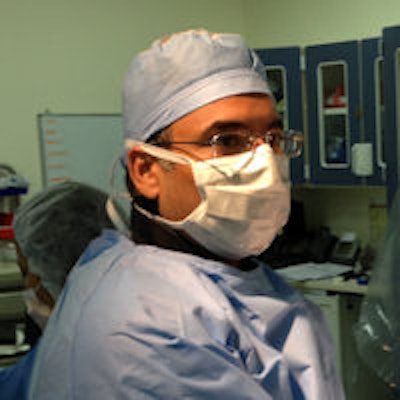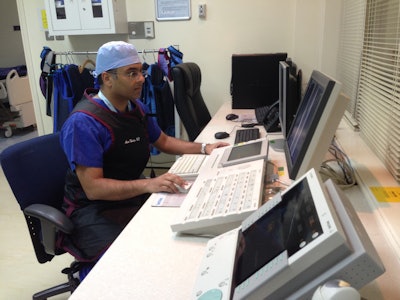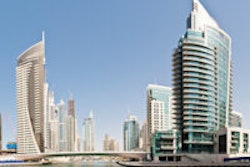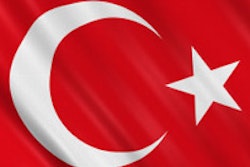
The Arab states of the Persian Gulf continue to seek and attract high numbers of expatriate radiologists to join their advanced and well-paid healthcare sector. However, radiology in the Arab Gulf has more to offer than just financial reward and a comfortable lifestyle, as many interventional radiologists are discovering.
For example, those who relocate to the Gulf can deepen their professional experience and find career-enhancing work opportunities. Interventional radiology (IR) is a growing subspecialty in the region, and centers are increasingly keen on setting up or expanding their own departments.
One example of those making the move is Dr. Asim Khwaja, a U.S. citizen who left his practice in Arizona in 2011 to join the governmental Sheikh Khalifa Medical City (SKMC) hospital in Abu Dhabi, United Arab Emirates (UAE), as a consultant interventional radiologist. He described what may lie ahead for other interventional radiology specialists looking to practice in the region.
Closer to home
Khwaja and his wife chose the UAE because they wanted to be nearer geographically to their families in Pakistan and to give their children, 9 and 12 at the time, an international experience before college.
"Originally we looked at Dubai, as it seemed very cosmopolitan, and I interviewed for a job there, but then one of the recruitment agencies I was with came up with a better opportunity in Abu Dhabi," said Khwaja, who gives talks about interventional radiology at local and regional meetings.
 Being part of a smaller IR team necessitates taking on a greater volume and range of cases than in the U.S., which has allowed Dr. Asim Khwaja, chair of radiology at SKMC, to develop his clinical role and educate physicians about new interventional techniques.
Being part of a smaller IR team necessitates taking on a greater volume and range of cases than in the U.S., which has allowed Dr. Asim Khwaja, chair of radiology at SKMC, to develop his clinical role and educate physicians about new interventional techniques.While the role in Dubai would have entailed setting up an interventional radiology department from scratch, SKMC was managed by the Cleveland Clinic, making the move there less risky in terms of Khwaja's employment prospects back in the U.S. afterward. In addition, the IR department there was already well-established.
Accompanied by his wife and daughter, Khwaja visited Abu Dhabi for two weeks, during which time he worked at the hospital as a locum.
"This window gave us a glimpse of what would be involved, not just in terms of social environment, schools, and the cost of living, but [also] ... a sense of the professional setup at the hospital, interaction with the other physicians, and the support structure from nurses and technologists," he noted.
He then signed an open-ended contract, and just nine months later he was invited to apply for the position of chair of the department of radiology, overseeing a predominantly expat team that included one other interventional radiologist, one nuclear medicine consultant, and 10 diagnostic radiologists. The hospital's CT, MRI, ultrasound, general x-ray, mammography, nuclear medicine, and IR sections comprise one of the most comprehensive radiology departments in the region. Furthermore, nine Emirati radiology residents make the residency program at SKMC the largest in the UAE.
"I wasn't used to being an 'employee' of a hospital in a hierarchical structure or reporting to a medical director," Khwaja noted. "Fitting in with this system has been a learning process, and I've grown professionally from my first day as chair. This professional growth has happened more rapidly than it would have in the U.S."
Khwaja also became medical director of the Radiology Support Service Line (RSSL) when it was formalized two years ago under the Abu Dhabi Health Services Company, or SEHA, the government company that oversees all public hospitals in the Emirate of Abu Dhabi. The RSSL groups radiology department chairs and managers who meet monthly to address issues such as staffing shortages and internal teleradiology to improve radiology departments.
 Just nine months into his contract, Khwaja became chair of radiology at SKMC, after originally being recruited as an IR consultant. Professional growth has been faster than it would have been in the U.S., he said.
Just nine months into his contract, Khwaja became chair of radiology at SKMC, after originally being recruited as an IR consultant. Professional growth has been faster than it would have been in the U.S., he said.Through the RSSL, Khwaja also introduced peer review as a standard policy in every SEHA hospital radiology department. The meetings also provide the opportunity to discuss and decide on imaging-related concerns in other disciplines such as obstetrics, trauma surgery, or emergency medicine.
At SKMC itself, he has implemented a critical-results notification system, in line with Joint Commission requirements, as well as a multihospital morbidity and mortality conference for interventional radiology. The conference provides an opportunity for interventional radiologists from SKMC and three other SEHA hospitals across two cities to regularly review procedural complications and share their expertise via video links. He has also redesigned and expanded the IR waiting and recovery area, hired more sonographers to extend the ultrasound service, and added a new 3-tesla MRI scanner.
Working in Abu Dhabi has also allowed Khwaja to refine his interventional radiology skills. Back in his Arizona practice, he was one of 12 interventional radiologists. At SKMC, he is one of two, which results in a greater volume and range of work than in the U.S., particularly in the treatment of liver cancer with targeted chemotherapy and with radiofrequency (RF) ablation.
Furthermore, drawing from his experience in the U.S., he has introduced a new technique to the UAE: carbon dioxide angiography. In this technique, carbon dioxide gas is injected into the blood vessel instead of iodinated contrast; the method is useful for imaging patients who are hypersensitive to iodinated contrast material or whose renal function is compromised.
"My role here keeps me clinically active," Khwaja said. "If and when we decide to go back, I will be able to cite a rich and varied work experience with many case logs to back up my CV."
Working with fewer interventional radiologists, however, can lead to potential gaps in the service during annual leave, which means that scheduling must be carefully planned. Another planning issue lies in ordering equipment ahead of procedures, and making sure that the department doesn't run out of critical items, as these take time to be imported and clear customs.
"One of the challenges in practicing IR here has been the variable exposure referring clinicians have had to this specialty," Khwaja said. "That means not everyone has the same understanding of what our practice entails and what we can offer. Some clinicians were surprised when I started seeing patients in my outpatient clinic at SKMC, although this is an established practice in the U.S. I have treated this as an opportunity to educate people about my subspecialty."



















